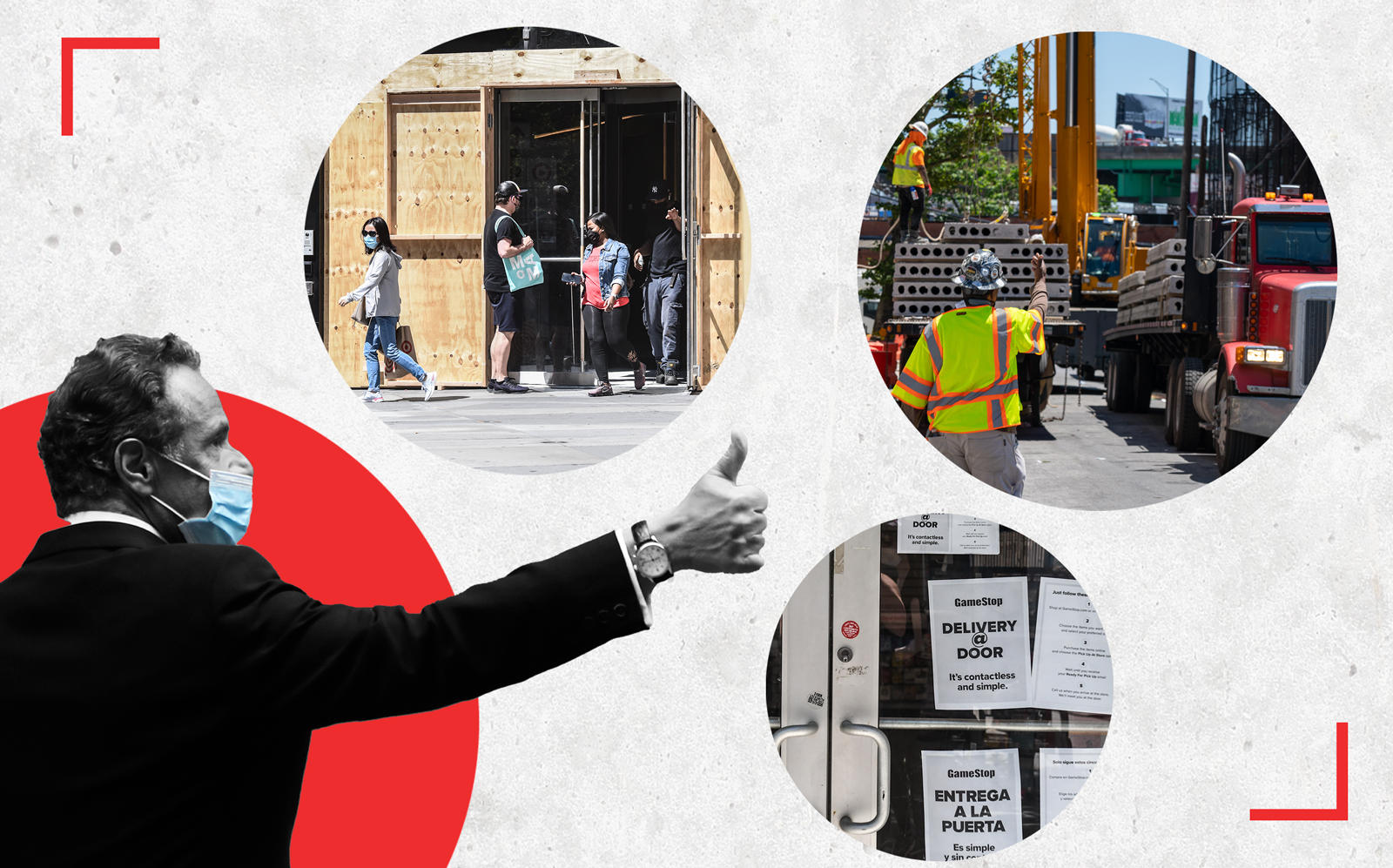Trending
Here’s what New York’s reopening will look like for real estate
Some retailers can open for pickup, and nonessential construction can resume with restrictions

On Monday, New York City became the 10th (and final) region in the state to begin reopening after the sweeping coronavirus closures.
For real estate, the biggest impact of the nearly three-month shutdown was that non-essential retailers could not operate, and non-essential construction work was halted. Some of that will change during the first of Gov. Andrew Cuomo’s four-part reopening plan.
The construction, retail, manufacturing, wholesale trading and agriculture industries can begin to get back to work — with some restrictions.
Here is what the first phase will look like in New York City:
Retail
Some non-essential retailers — including sellers of clothing, electronics, furniture, flowers, health and personal care, jewelry, musical instruments, sporting goods, books and office supplies — can resume deliveries and curbside or in-store pick-up. There must be designated pick-up and delivery areas areas to limit exposure.
Retailers must provide employees with protective equipment, and occupancy cannot surpass 50 percent of what is typically permitted. Employees who pass a daily health screening and are permitted to work must keep at least six feet apart. Enclosed spaces such as elevators are restricted to one person, but if all employees are wearing a face mask, elevator capacity can be up to 50 percent of the usual.
Previously, only essential retailers including grocers, pharmacies and hardware stores were allowed to be open. Restaurants and bars remain limited to takeout and delivery service.
The state’s full guidance on retail is here.
Construction
More than 33,000 non-essential construction sites are eligible to reopen.
The Building and Construction Trades Council of Greater New York, the Building Trades Employers’ Association and the Real Estate Board of New York have agreed to a set of safety standards for union sites (or those with collective bargaining agreements). Workers must wear face coverings at all times, a departure from the state guidance that required masks only if social distancing is not possible.
At least six feet must be maintained between workers, unless the activity — dry walling, lifting, etc. — calls for less. No gatherings are allowed in enclosed spaces, but if all workers are wearing a face mask, elevator capacity is up to 50 percent.
The trade organizations are also seeking the city’s help to implement alternative work schedules. Start times may be staggered between 6 a.m. and 10 a.m., and the work week may be limited to four days with 10-hour shifts.
Previously, work was limited to health care facilities, homeless shelters, transit projects, schools and affordable housing. Emergency work and construction underway at any essential businesses, such as grocery stores, was also permitted. However, developers were able to apply to the city’s Department of Buildings to have projects deemed essential even if not within the state’s framework. As of Sunday, June 7, the city had 8,200 “essential” sites.
Here is the state’s full guidance on construction.
Manufacturing
Manufacturers of apparel, electronics, furniture, leather, paper, wood, textiles plastics and more can resume work.
The restrictions are similar to that of retail: daily health checks must be performed, social distancing and protective gear is required, and workforce must be limited to 50 percent.
Here is the state’s full guidance on manufacturing.
Phase 2 and beyond
The second phase of reopening — expected in a few weeks — will allow offices to operate at 50 percent capacity and will unwind some of the restrictions on real estate, retail shopping and dining. For example, outdoor dining will be permitted, with some limitations.
Guidance has yet to be released for the third and fourth phases of reopening, which will include restaurants and bars, and recreation and education facilities, respectively.
Kathryn Brenzel contributed reporting.




